 |
 |
 |
| |
Impact of a Structured Hepatocellular Carcinoma Surveillance Program in Patients with Cirrhosis: Frequency, Evaluation and Subsequent Clinical Outcomes of Patients with Abnormal Imaging Findings
|
| |
| |
Reported by Jules Levin
AASLD: The Liver Meeting 2017, October 20-24, 2017, Washington, DC
Aashesh Verma, Monica A Konerman, Betty Zhao, Anna S Lok, Neehar D Parikh
Division of Gastroenterology and Hepatology, University of Michigan, Ann Arbor, MI
Download the PDF here
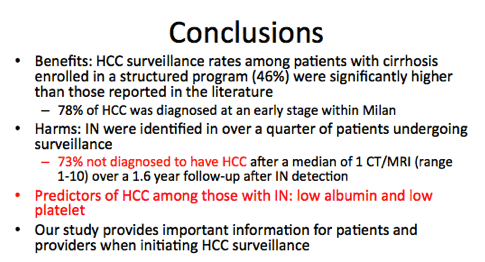
In conclusion - the benefits of an HCC Surveillance Program were that we achieved serial surveillance at 46%, which is higher thon those reported in literature. Further 78% of patients diagnosed with HCC were diagnosed at an early stage within Milan
We found that surveillance can also create harms, with IN's being identified in 26% of patient's undergoing surveillance, and with 73% of those not results in a diagnosis of HCC
This highlights the difficulty in characterizing the benefits and harms of HCC surveillance, and that we need improved risk-stratification tools that focus on clinical and laboratory assessment, such as platelets or albumin - to maximize the benefits and reduce the harms associated with surveillance.
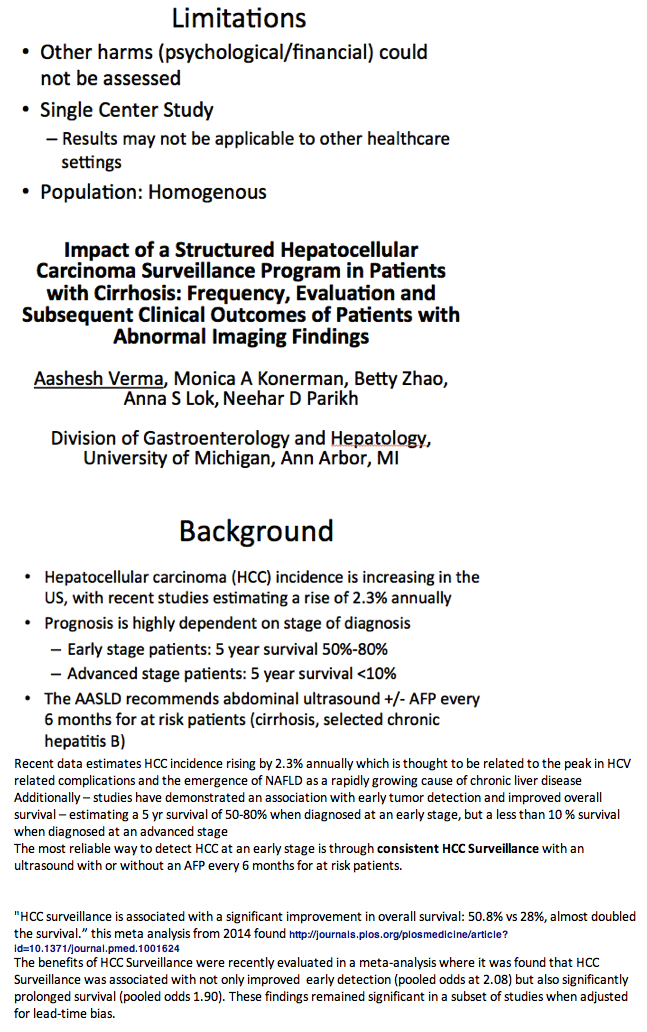
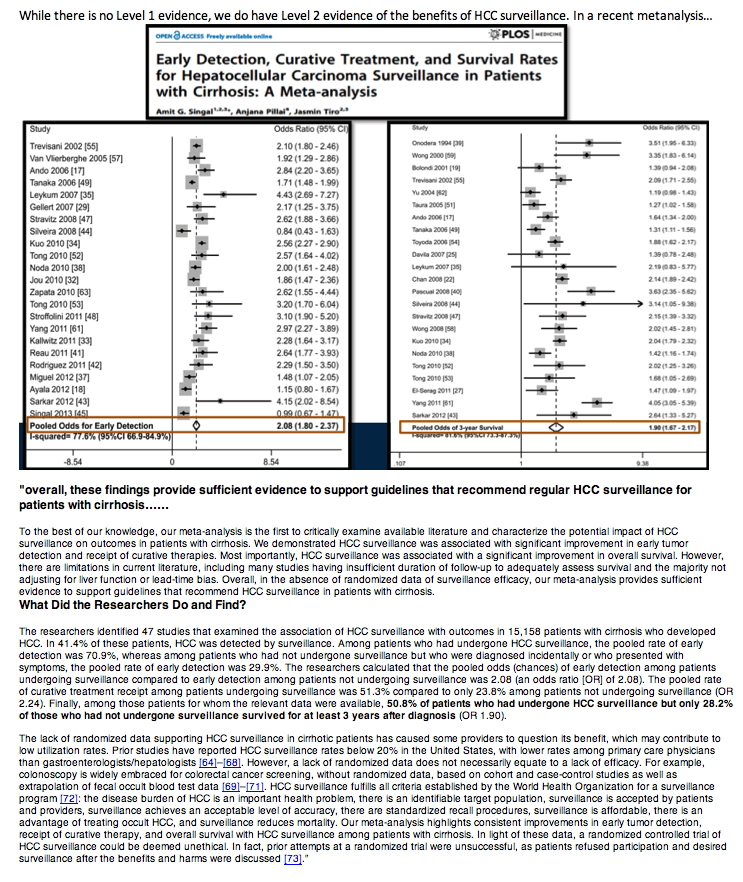


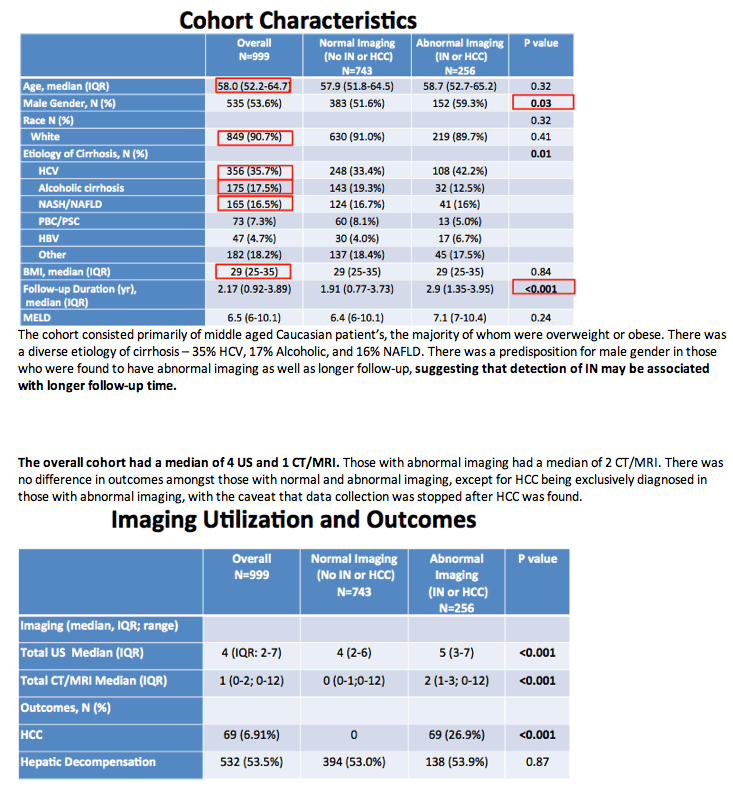
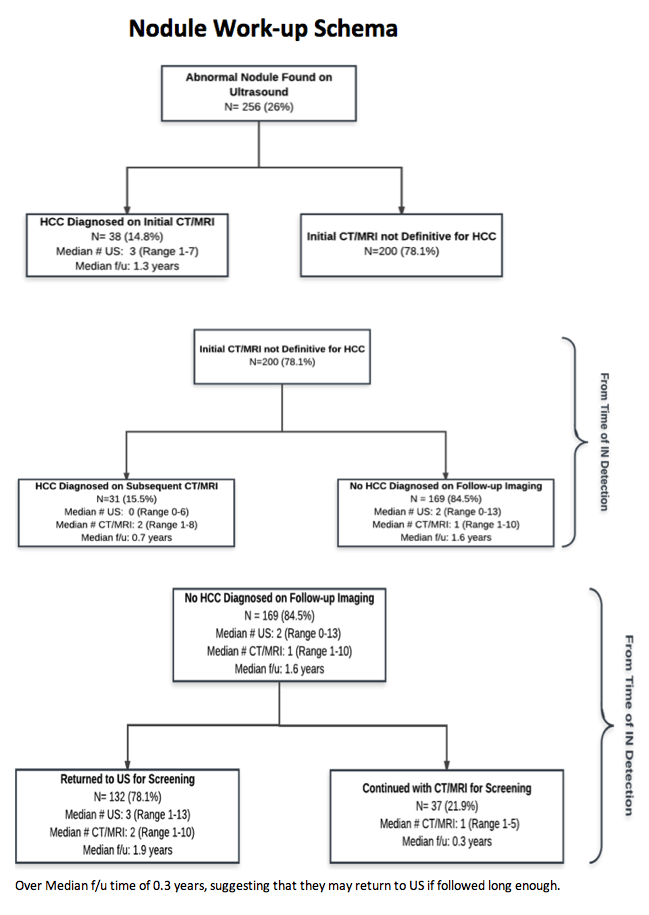
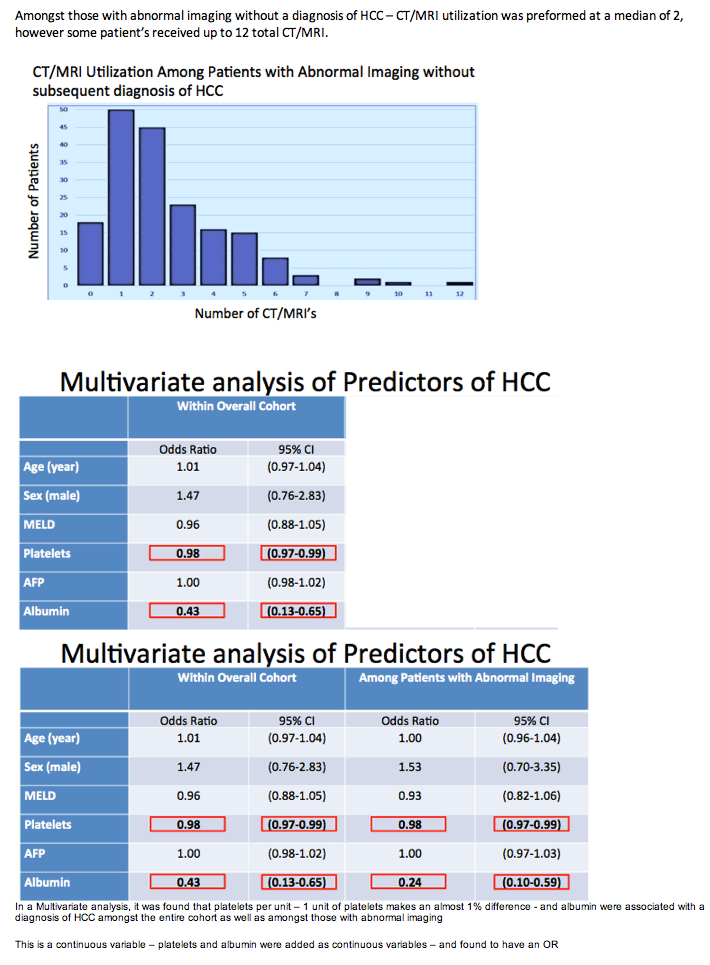
|
| |
|
 |
 |
|
|